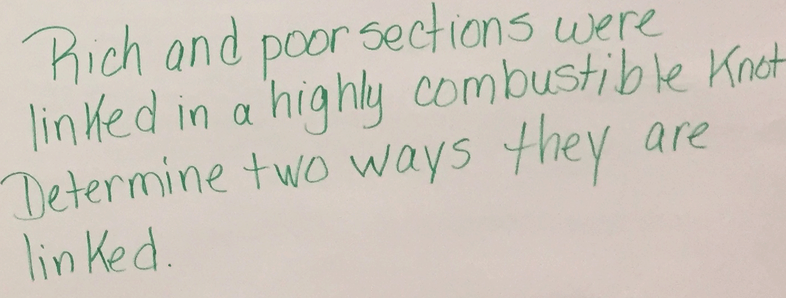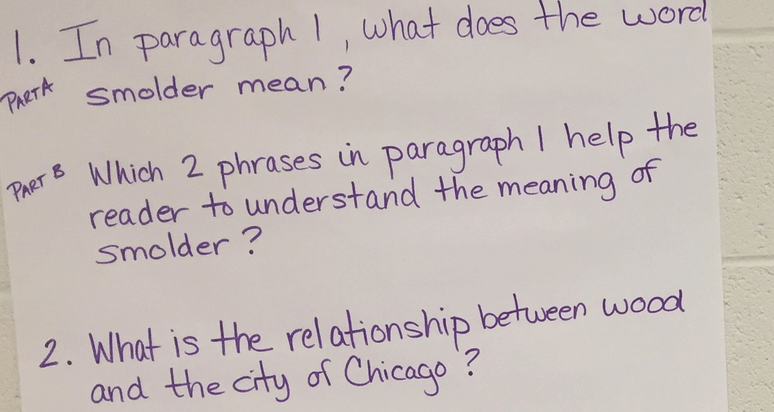I have a dream. My dream is that one day every teacher, parent, superintendent, board member, curriculum director, and student will understand the purposes behind assessments, will be able to craft and utilize aligned questions to check on and improve student understanding, and will avoid having seizures upon hearing the word “assessment.”
In full disclosure, I am an assessment junkie and I probably should enter a five-step program. I dream of an educational system that uses assessment to improve instruction. Perhaps this vision is only logical in my head. However, as a former teacher and student, and as an administrator, I have seen how instruction can improve when people capitalize on this dream of assessment literacy (Black and WIliam, 1998, Drost, 2016). Assessment literacy helps teachers:
- Convert assessment data to probe for causes where students are under-performing or exceeding expectations
- Analyze conditions that contribute to various trends in achievement
- Develop intervention and enrichment strategies to support these analyses
By capitalizing on assessment literacy, conquering any test—standardized included—is doable as you start to focus on the strengths of the experts in the classrooms: our teachers and our students.

While it is great to have this dream where tests aren’t conquering us, the reality is that people are deflated. So how do we go about helping people envision this dream (a dream that for some is currently a nightmare) so that they become the ones doing the conquering? While I can’t claim to know everything about leadership (I still question some days whether or not I am a leader), I encourage you try this process with educators. I have used this process in many different districts across our state (urban, suburban, rural) to help educators understand what assessments are about and why the assessment questions that are appearing on standardized tests help prepare students to be college- and career-ready.
Bringing them into the dream starts by asking other educators to begin with a dream of their own: ask your group to dream big by drawing their ideal language arts classroom. (You can mix it up and have them list what their ELA student would do as well.) Interestingly, no matter the group, state, grade level, or teacher team (I remember one from 2014 that threatened to key my car because they couldn’t believe that “I was doing this to them.”), when we ask what the ideal ELA classroom looks like, it always includes wanting kids to justify their thinking with text-based evidence, build their understanding of new ideas, and decode key ideas in the text. Now have your team compare their ideas to the instructional Shifts and determine where they see evidence of the Shifts in their drawings. Interestingly, most drawings have evidence of all three Shifts.
Now that you’ve got them with some buy-in, you have the opportunity to bring them into the assessment dream. Share the following diagram and use it to build understanding of what assessments are. Chant this mantra: “assessments are evidence of claims of student learning.” What we are trying to prove is knowledge of the standards and Shifts. Assessments become the evidence of our claim. Our educational dream in this country is that we want students to be college and career-ready. A noble goal! Thus, in order to accomplish this goal, we have to have ELA assessment questions that are text-dependent, focus on academic vocabulary, have kids write to sources, and analyze informational texts (i.e., the Shifts and what so many articulated as their vision for their ideal ELA classroom).

So now that folks have entered into the dream, it’s time to start moving them forward. The key is, of course, not to let them nod off, as assessment writing can be a bit dry. (My fellow psychometrics, please forgive me!)
Start by giving them an example of an assessment that is aligned—I use this one here but you can use any that is conducive to the grade level. Have teachers analyze the assessment in relationship to the standards as well as the Shifts. How does each question get at each of the claims (standards and Shifts)? Dare them to find the connections. Probe until they do.
Next, give them an example of an assessment that is half-and-half. Find your favorite Teachers Pay Teachers example of unaligned questions and mix them up with questions that are aligned. I use elements of this one and mix it with aligned questions from here. Dare teachers to find the ones that are stinkers and don’t conform to the dream.
Now that you’ve primed them, get them to dream big: they are capable of writing their own questions. Use this passage here and have them write question stems. Have the group connect the stems in relationship to the Shifts and back to the claims that they are trying to prove. See these examples (below) from the last time I dared a group to enter the dream and to write some aligned questions to prove their claim that students could analyze the provided text. You can provide the questions in the mini-assessment for them to compare their questions after they have written their own first.
Unfortunately, this isn’t where you can stop—it’s now up to you to find out how this professional learning is helping to conquer the big, bad test. It’s time to chart that evidence of impact of the big dream: in my world, it’s when students say that they understand why they have to justify their thinking in an essay rather than a multiple-guess question; it’s when teachers tell me “no sweat, we write better questions than the textbook does,” and it’s when our administrators start to smile and see their scores go up because they have helped to lead assessment literacy and capitalize on the dream.
Now if you’ll recall, way back at the beginning of this entry, I shared with you that this is about a dream. While I can’t ensure that every individual in this country will subscribe to the dream, I can assure you that, by starting with these steps, you’ll be making the dream a reality—a reality where educators understand that we can conquer that big, bad ELA test.
Works Cited:
Black, P. & Wiliam, D. (1998). Inside the Black Box: Raising standards through classroom assessment. King’s College: London.
Drost, B. (2016). 8 digital formative assessment tools to improve motivation. AMLE Magazine.



















